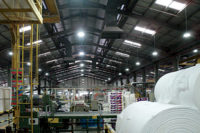Much of offshoring occurred due to corporate failure to do the math, to consider all of the associated costs, strategic impacts and risks. The Reshoring Initiative’s free online Total Cost of Ownership Estimator™ is available to help companies do the math.
— Harry Moser, founder of The Reshoring Initiative
Over the last two decades or so, offshoring has become popular with many corporations in the developed world. This consists of moving an entire product or some part thereof to a country that usually has lower wages than in the developed country and thereby reducing costs.
There are two main types of offshoring.
Moving an in-house design to another manufacturer located in another country. This may even happen involuntarily when a supplier moves production to an offshore location.
Getting another manufacturer to design an assembly to a given specification and manufacture same offshore.
I will give a case study of an actual scenario. Corporation N decided to make a product O. One sub assembly of product O was subcontracted to supplier A (both design and manufacture).
Initially things did not go too badly. The sub assembly P was made in a location with skilled labor and to a design that led to reasonable reliability (not top notch reliability).
After about a year of production, the supplier A decided to do two things.
Move production to an area where the labor was less skilled and had not been trained in making this type of product.
The design itself was cost reduced introducing more fragile parts which were cheaper to source.
As a result, supplier A was able to reduce the price of product P to company N.
Some company N managers were lauded for arranging this “cost reduction.”
The result was a disaster. The failure rate of sub assembly P rose alarmingly causing the entire product O to fail. This led to increased warranty costs and decreased customer satisfaction (CSAT) for company N.
Company N, alarmed by the increased costs and falling customer satisfaction, engaged a top engineer to design a drop-in replacement for sub assembly P (this was needed as the design rights for this part were with company A). After much effort, cost and time, prototypes of a replacement part P1 were made and tested in various applications of product O.
Unfortunately, the replacement part P1 did not work to specification in all applications of product O. Thus the company N was stuck with an unreliable product.
What are the lessons from this fiasco?
Offshoring has risks.
If the product design is outsourced, it is difficult to find a replacement if there are problems. The higher the level of technology, the greater the risk.
If the product design is in house, there is a danger that the design may “leak” and competitors may make a copy. This is true even in less high tech products like designer consumer goods where a leak of information at the supplier could lead to competitors making a “similar” product.
In fact, one could say that it is part of a larger problem of pseudo cost savings.
Some person puts through a cost saving/improvement which has a short term positive effect on the bottom line but is a disaster in the medium or long term. A good example which I am aware of is a small railway Q which was not doing well financially. A new manager was appointed and he improved the results by cutting maintenance of locomotives, wagons and tracks. The profits increased and he got a new job based on his “success.” After he left, disaster struck in the form of stalled locomotives, broken down wagons and derailments caused by lack of track maintenance.
Another example is cutting/not hiring knowledgeable staff. The conclusion is that management should study improvements in detail and see the long term impact on sales and CSAT (which affects sales). CSAT does affect sales but to quantify it is difficult.
Those who propose these changes should not be rewarded until the longer term impact is seen.
An illustration based on the natural rubber industry will show this clearly. Natural rubber is made by making a few cuts on the bark of a tree (Hevea Brasiliensis), collecting the sap which oozes out and processing it. One can boost the output of natural rubber by making many cuts in the bark. More sap oozes out and more rubber can be made. In some cases this kills the tree. Output drops. This technique is called “slaughter tapping.”
Keep the slaughter tappers out of your business.


